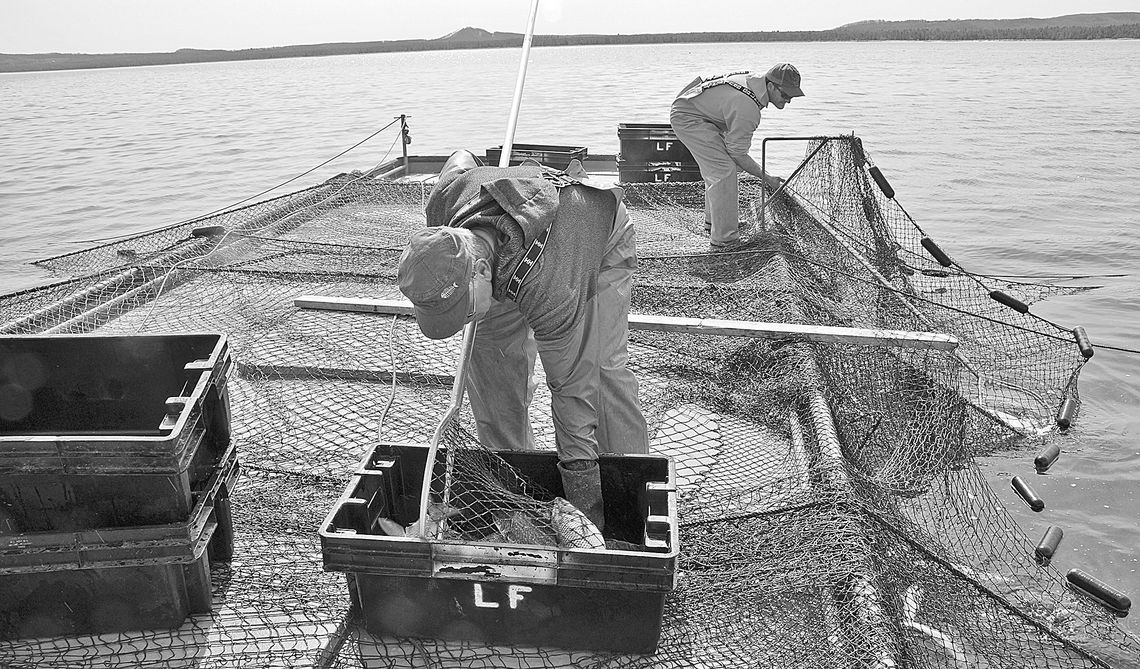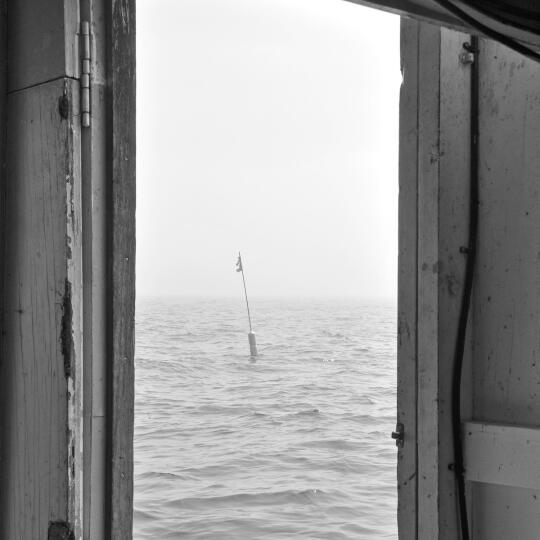Editor’s note: The following story was reprinted with permission from Okemos author Laurie Kay Sommers and the Fishtown Preservation Society. It was taken from chapter 8 of Sommers’ book “Fishtown: Leland, Michigan’s Historic Fishery.” The chapter is about the Brotherhood of the Lake.
From the Manitou Islands to Grand Traverse Bay, lake work takes place within a vast underwater geography of fishing banks, each with their own name and characteristics. Folklorist Michael Chiarappa noted the importance of these “customary locations or home waters,” which for multiple generations have linked Fishtown’s traditional fishing territories to fish tugs and shoreside facilities. These are the banks that local fishermen knew — and still know — like the back of their hand.
In years past, boats freely roamed Lake Michigan following the fish. Since the 1960s, however, the Michigan Department of Natural Resources has assigned fishing licenses to particular zones of the lake to prevent overfishing, and the catch is limited to a quota per license. Some historic fishing grounds are now off limits, either by quota, Indian fishing rights rulings, or the establishment of special trout sanctuaries, such a those between the Fox Islands.
Generations of fishermen learned the locations of the fishing grounds and became masters in the habits of fish. “They had a sixth sense,” said Brian Price, “an ability to read the water and the currents” without the benefit of sounders, charts, and electronic equipment. Jim VerSnyder recalled Pete Carlson’s sixth sense. “’Let’s go down here about a half of a mile,’ he would say. ‘There’s a hook in the bank down there, and the chubs always seem to hang on that hook.’ Sure as heck, the next time we go out, we’d have a load of chubs. Now it’s easy, with the electronic equipment. I can’t imagine doing what they did without it. And the thing about Pete was, he never even kept a log. He never wrote in a book or anything. It was all in his memory. He just lived and breathed it.”
Fishermen in the age before radar were expert navigators. Their skill with a compass was commonplace for the time but legendary today. VerSnyder still marvels at their ability to find a net buoy even in a dense fog or storm: “These guys were really good at ranges. But if you had fog, you’re pretty much going by your compass. So you’re running so many minutes — an hour and forty minutes or two hour — and then you stop and you look for the buoy. Well, if it’s foggy out there, trying to pinpoint that little stake that far out, you’ve got to be really wheeling a true course. When we got into the radar, they had reflectors they’d put on the buoy staffs, so when you got close, it would pick that up on the radar. They’d run right up to it, whether it’s foggy or whatever.”
Buoys mark the location of both gill and trap nets, the latter used in Fishtown only since the 1980s. Historically, fishermen also used pound nets. Each net required a different boat design and skill set. Trap-netters, for example, have open decks best suited to fishing in calmer waters. Gill nets are easily moved, but trap nets remain in one location, held down by anchors on the lake floor. Brian Price, who crewed on the trap net boat, Joy, described setting trap nets as a shell game. “You’re always trying to outsmart the fish, even more than with the gill net fishery. When you hit it right, trap nets can be wildly successful. You’re starting to pull the net up, and as the fish rise through the water — maybe the net’s in 80 or 90 feet — you see the water start to boil because they’re expelling air from their air bladder. It’s just fun. Sometimes 6,000 pounds is not unheard of in a trap net, and it’s like hitting the lottery.”
Earlier generations of fishermen used pound nets, another impoundment technique that disappeared with the arrival of the sea lamprey. “When I went to fishing,” Roy Buckler recalled, “they used those (pound nets) for years and years down here. They were hung on sticks and had a lead, a pot, and a trap. (Fish) would follow the lead out from the beach and get caught in the trap.” Pound nets required calmer waters and comparatively shallow depths in which to pound the stakes that secured the net, hence the name pound net.









